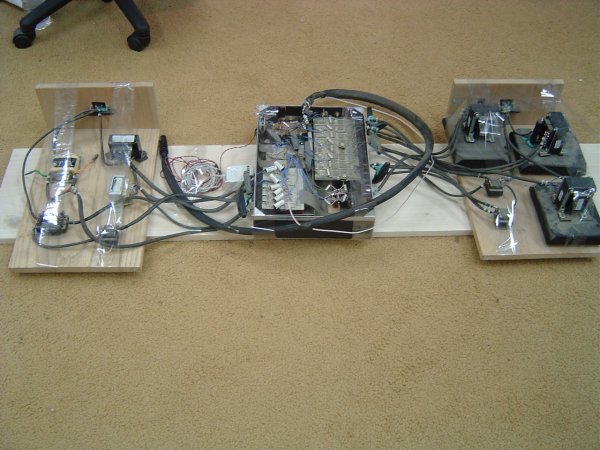I was wondering what people who have heard/own the Accuphase DC-91 think about this DAC. It is an impressively engineered machine...like all Accuphase stuff I guess.
It is using 16 x PCM63Ks per channel!! Now this is interesting to me because I still think that the PCM63K is one of the very best DAC chips ever made. Putting 16 together gives a noise floor drop of 12db, which is quite substantial and the measurements in Stereophile reflect the benefit...not to mention show how good the power supply of this machine is.
The only comparable DAC today in terms of design is the Aries Cerat Kassandra series of DACs, which use anywhere from 16 to 24 AD1865N (an 18bit multibit DAC) per channel and go further with an even bigger power supply and of course tube with transformer coupled output stage. Also, the Aries Cerat machines are non-oversampling whereas the Accuphase was 8x oversampled and of course SS output.
Anyway, again this is an all PCM machine, which is limited to redbook, but this machine might do PCM better than most of today's entries.
It is using 16 x PCM63Ks per channel!! Now this is interesting to me because I still think that the PCM63K is one of the very best DAC chips ever made. Putting 16 together gives a noise floor drop of 12db, which is quite substantial and the measurements in Stereophile reflect the benefit...not to mention show how good the power supply of this machine is.
The only comparable DAC today in terms of design is the Aries Cerat Kassandra series of DACs, which use anywhere from 16 to 24 AD1865N (an 18bit multibit DAC) per channel and go further with an even bigger power supply and of course tube with transformer coupled output stage. Also, the Aries Cerat machines are non-oversampling whereas the Accuphase was 8x oversampled and of course SS output.
Anyway, again this is an all PCM machine, which is limited to redbook, but this machine might do PCM better than most of today's entries.















